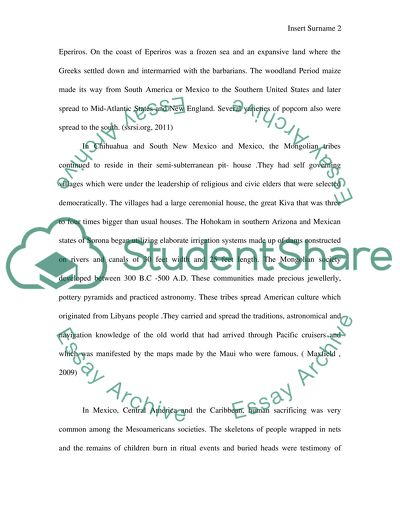History of Early Civilizations in America in the Period 0 - 300 A.D Research Paper. Retrieved from https://studentshare.org/history/1436599-anything-from-the-ice-age-to-the
History of Early Civilizations in America in the Period 0 - 300 A.D Research Paper. https://studentshare.org/history/1436599-anything-from-the-ice-age-to-the.


